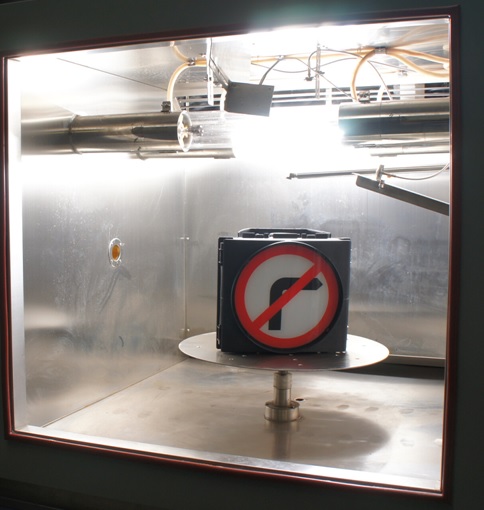Cranage EMC explains climatic testing and why it’s important
In a testing laboratory this concerns the simulation of weathering conditions for the verification of products and materials to perform reliably in natural or induced environments. It is almost impossible to test in the natural open-air environment because the test conditions are uncontrolled, inadequate and not usually available when needed.
Climatic testing is a type of environmental stress testing which is used to assess product reliability, quality, safety and compatibility. It takes the guesswork out of knowing for how long or how well an item will perform its intended function in its intended environment.
Various standards, eg. AECPT 300, publish test methods which may occur either individually or in combination with other environmental stress elements and whilst it is impossible to simulate the total environment in a laboratory, climatic testing in a laboratory attempts to provide exposure to simulated conditions from which a degree of confidence in the test results can be assumed.
Typical climatic tests which are frequently applied to products to demonstrate environmental resistance include temperature, humidity, altitude, dust, water spray/immersion, solar radiation, salt fog/spray and vibration/shock/impact testing.
Outdoor products such as trackside signalling systems, airfield lighting, road signs, etc. undergo extensive testing to verify enhanced safety, reliability, and optical performance during their whole service life. One of the challenging aspects of climatic testing is to assess the thermal and actinic degradation effects of solar radiation.
How is it done?
Laboratory testing methods typically use LED, halogen or high-pressure Xenon long-arc lamps as the illuminant. The spectrum of radiation produced by a Xenon discharge lamp has been described in Def Stan 00-35(Part3) as providing the best spectral match, (Section 4: Radiation Sources) and has been scientifically proven to replicate the distribution of solar energy at the earth’s surface in the ultraviolet and visible light range, with wavelengths from 290nm to 700nm.
A Xenon long-arc lamp array is also a source of infrared radiation, and so this arrangement provides a testbed to evaluate products and materials that are exposed to natural solar radiation at ground level, which includes surface heating and mechanical stress due to absorption of radiant energy and photo degradation (actinic effects) caused by ultraviolet radiation. Simultaneous exposure to temperature, humidity, wind and rainfall can be added to the solar radiation simulation test and programmed with or without diurnal variations in accordance with the appropriate environmental test specification to assess the synergistic effects of environmental stress.
To establish the equivalence between solar radiant exposure and the radiant exposure emitted by simulation, the test chamber is calibrated for colour temperature, irradiance, spectral distribution and uniformity over the whole test surface area. Sensors within the test chamber maintain temporal stability, and the lamps are confidence checked before and after use, using two types of instrument; a UV-VI-NIR spectrometer with 0.5nm wavelength resolution, and a pyranometer, which is a thermopile detector having a measurement range up to 2000W/m2 and a radiation cut off at 3µm. The pyranometer is an instrument detailed for the measurement of irradiance in Def Stan 00-35(Part 3) (Section 5 Instrumentation) and is used world-wide for the measurement of solar radiation in the spectrum range 300nm to 3000nm.
A climatic test chamber for assessing the impact of solar radiation in combination with other environmental elements is calibrated for air temperature, humidity, wind velocity, rainfall, and irradiance before and after use, and each time the lamps are replaced. In this way, the radiant exposure and test conditions within the test chamber can be compared with the solar radiant exposure levels such as those detailed in Def Stan 00-35(Part 3) Environmental Test Methods (Table 2: Detailed Spectral Distribution of Global Radiation).
Why is it important?
Problems that could occur as a result of climate exposure may temporarily or permanently impair the functionality of products by changing the physical, chemical or electrical properties of materials.
Who is it for?
Anyone supplying products and materials to be used throughout the world or in the most extreme climatic zones where safety and functionality is a prime consideration.

